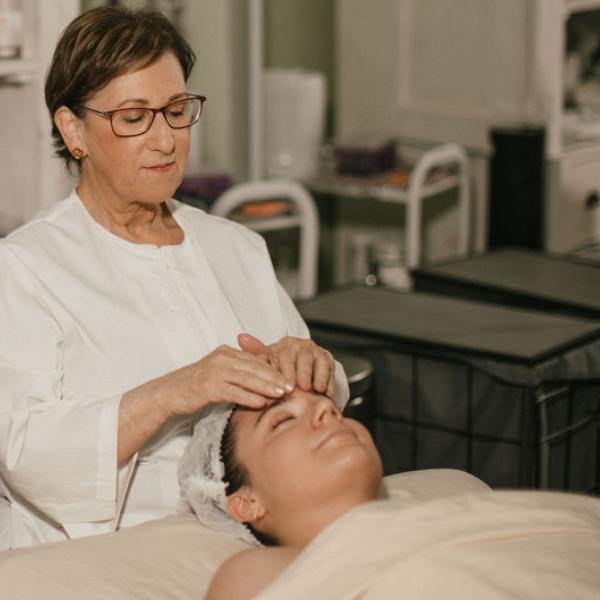Did you know? Acne is most commonly an inherited disorder of the pore and is also largely a hormonal condition.
“approximately 50-90% of acne was due to genetic variation in the affected individuals.” [News-Med]
If you have acne, you’re not alone; probably one or more of your family members have/had it, too. In fact, 80% of people have experienced acne in their life. Those who experience acne have inherited the tendency for their skin to overproduce “keratinocytes” (aka dead skin cells) - about 5x more than necessary!
Some family members are predisposed to imbalances in hormones, especially androgens, leading to overactive sebaceous (oil) glands. The oil and dead skin cells congest the pores and to make things worse, acne bacteria will feed on the mix, inflammation joins the party, and all together they start growing into one of the many types of acne.
What is Acne?
Acne, or retention hyperkeratosis is an inherited condition in which pores shed dead skin cells quicker than the body can expel them. While typical pores shed one layer of dead skin cells a day, acne-prone pores shed up to five layers a day.
The Different Types of Acne
There are two main categories each type is considered under: “Non-Inflamed” or “Inflamed.”

Whitehead
Whiteheads are non-inflamed type of acne; a closed comedone. Whiteheads are dead skin cells and sebum build up within the pore, below the surface of the skin. They appear as a white dot on the skin. With no exposure to air, the material inside the pore remains white, just as its name suggests.

Blackhead
Blackheads are a non-inflamed type of acne. Open comedones are an open pore containing oxidized dead skill cells and sebum. These breakouts appear like a dark enlarged pore. The material built up inside the pore oxidizes due to air exposure; that is what give them their dark appearance.

How to Prevent Blackheads and Whiteheads?
Don't skip your exfoliating serum, scrubs (if advised by your Acne Expert), or your acne med. Exfoliating is a key factor in keeping these comedones at bay.
Papule (often referred to as a "pimple”)
Papules are an inflamed acne type. They are small red pumps that are hard to the touch. They're caused by dead skill cells, sebum, and bacteria. Sometimes you can tell one is coming, because you might feel pain before it surfaces.

Pustule
Pustules are an inflamed type of acne. It's an infected comedone that appear appears white and yellow in the center. It contains dead skin cells, sebum, and pus (dead white blood cells). Like papules, pustules can be painful.

Nodule
Nodules are an inflamed type of acne. A solid, dome-shaped red lesion that extends below the surface, deep into the layers of the skin. The result of bacteria within the pore that has infected nearby follicles. Scarring is common with nodules and can sometimes leave an impaction behind, which can flare again and again.

Cystic
Cystic acne is an inflamed type of acne. Considered the worst of all inflamed acne, Cysts are full of pus and white blood cells and occur when pustules cluster together under the skin. They feel tender, deep and are usually painful. Supplements like fish oil may help to reduce inflammation which could lead to scarring, if they aren't carefully treated.

How to Prevent Inflamed Breakouts?
Do not skip your acne med or exfoliating serum. These are essential in keeping [inflamed breakouts] at bay. Icing after cleansing and incorporating the Sulfur Spot Treatment into your routine will help reduce the appearance of redness and inflammation. Remember not to pick at your breakouts as you will risk more bacteria developing and spreading to other pores.
Why Do I Get Acne?
Although genetics and hormones are the main causes of acne for most people, there are a few things to note:
Even if your family has acne, that doesn’t guarantee you’ll get it- you’re just more likely to.
Harmful products, as well as physical friction, can stimulate irritation and clog pores [worse so for those already prone to breakouts], too.
Other lifestyle factors can contribute to triggering acne. Certain foods, stressors, and habits can cause breakouts in anyone, and make it worse for those who already have acne.
How to Treat Acne?
Acne type is only one aspect of acneic skin; there are different skin types, sensitivity levels, Fitzpatrick types (ethnicity) and differing acne severities that factor into the condition of someone’s skin. This is why it’s important to realize that your skin is unlike any other, and is unique to you- just like your treatment should be, too!
The triggers of acne can vary in each individual. It’s important to learn about yourself to find out how you can stop breakouts in your own skin! Using the right products, following lifestyle coaching advice, and receiving professional treatments have helped so many of my clients.
Have acne? Want to get clear? Learn how Acne Boot Camp works to Clear Your Skin



